The National Severe Storms Laboratory (NSSL) is a National Oceanic and Atmospheric Administration (NOAA) weather research laboratory under the Office of Oceanic and Atmospheric Research. It is one of seven NOAA Research Laboratories (RLs).
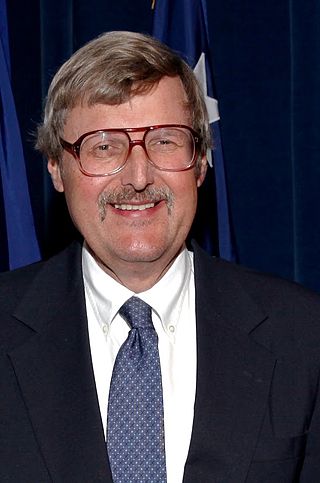
Ronald William Przybylinski was an American meteorologist who made important contributions to understanding of bow echoes, mesovortices, related quasi-linear convective system (QLCS) structures and processes, as well as QLCS related tornadoes. He also was an expert on technical aspects of weather radar and applications to both operational meteorology and research.
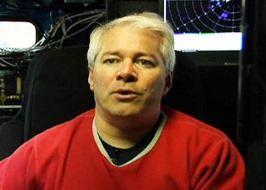
Joshua Michael Aaron Ryder Wurman is an American atmospheric scientist and inventor noted for tornado, tropical cyclone, and weather radar research.
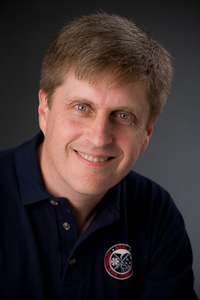
Harold Edward Brooks is an American meteorologist whose research is concentrated on severe convective storms and tornadoes, particularly severe weather climatology, as well as weather forecasting.

The Verification of the Origins of Rotation in Tornadoes Experiment are field experiments that study tornadoes. VORTEX1 was the first time scientists completely researched the entire evolution of a tornado with an array of instrumentation, enabling a greater understanding of the processes involved with tornadogenesis. A violent tornado near Union City, Oklahoma was documented in its entirety by chasers of the Tornado Intercept Project (TIP) in 1973. Their visual observations led to advancement in understanding of tornado structure and life cycles.
Howard Bruce Bluestein is a research meteorologist known for his mesoscale meteorology, severe weather, and radar research. He is a major participant in the VORTEX projects. A native of the Boston area, Dr. Bluestein received his Ph.D. in 1976 from MIT. He has been a professor of meteorology at the University of Oklahoma (OU) since 1976.

Roger M. Wakimoto is an atmospheric scientist specializing in research on mesoscale meteorology, particularly severe convective storms and radar meteorology. A former director of the National Center for Atmospheric Research (NCAR), Wakimoto in November 2012 was appointed as assistant director of the Directorate for Geosciences (GEO) of the National Science Foundation (NSF).
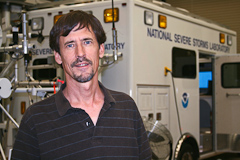
Erik Nels Rasmussen is an American meteorologist and leading expert on mesoscale meteorology, severe convective storms, forecasting of storms, and tornadogenesis. He was the field coordinator of the first of the VORTEX projects in 1994-1995 and a lead principal investigator for VORTEX2 from 2009-2010 and VORTEX-SE from 2016-2017, as well as involved in other smaller VORTEX offshoots and many field projects.
The following is a glossary of tornado terms. It includes scientific as well as selected informal terminology.
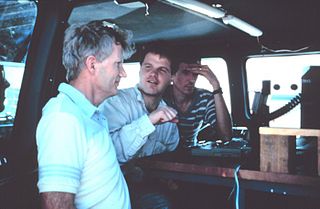
Robert Peter Davies-Jones is a British atmospheric scientist who substantially advanced understanding of supercell and tornado dynamics and of tornadogenesis. A theoretician, he utilized numerical simulations as well as storm chasing field investigations in his work as a longtime research meteorologist at the National Severe Storms Laboratory (NSSL) in Norman, Oklahoma.

Jerry Michael Straka is an American atmospheric scientist with expertise microphysics of clouds, cloud modeling, and dynamics of severe convection in conjunction with weather radar. He was in leadership roles in both the VORTEX projects and subsequent field research focusing on tornadogenesis.

Adam James Clark is an American meteorologist at the Cooperative Institute for Mesoscale Meteorological Studies (CIMMS) and the National Severe Storms Laboratory (NSSL) recognized for contributions to numerical modeling of convection.
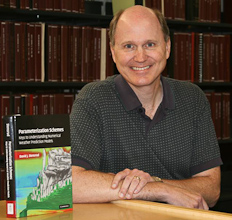
David Jonathan Stensrud is an American meteorologist recognized for numerical modeling and forecasting of hazardous synoptic and mesoscale weather and for incorporating new data into models.
David Owen Blanchard is an American meteorologist, photographer, and storm chaser. He was a significant collaborator in seminal research on tornadogenesis, specifically the importance of baroclinic boundaries, the rear-flank downdraft (RFD) and its thermodynamic characteristics.
Jeffrey W. Frame is an American atmospheric scientist known for observational and modeling studies of severe convective storms and for teaching meteorology. He was a scientist for VORTEX2 and other field research programs.

Donald W. Burgess is an American meteorologist who has made important contributions to understanding of severe convective storms, particularly tornadoes, radar observations and techniques, as well as to training other meteorologists. He was a radar operator during the first organized storm chasing expeditions by the University of Oklahoma (OU) in the early 1970s and participated in both the VORTEX projects.
Katharine M. Kanak is an American atmospheric scientist with noted publications on the dynamics and morphologies of atmospheric vortices, including tornadoes, tropical cyclones, misocyclones and landspouts, and dust devils both terrestrial and Martian.
Yvette Richardson is an American meteorologist with substantial contributions on tornado dynamics, tornadogenesis, the environments of tornadoes, supercells, and severe convection, and radar observations of these. She was a principal investigator (PI) of VORTEX2.
David C. Dowell is American atmospheric scientist recognized for research on tornado structure and dynamics and on tornadogenesis. He participated in both of the VORTEX projects.
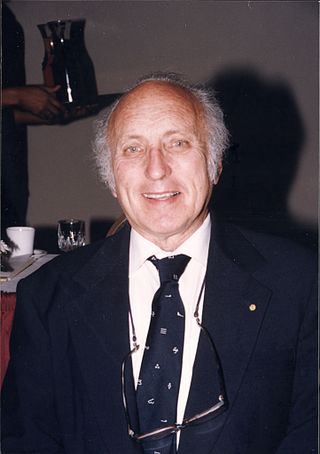
Edwin Kessler III was an American atmospheric scientist who oversaw the development of Doppler weather radar and was the first director of the National Severe Storms Laboratory (NSSL).











